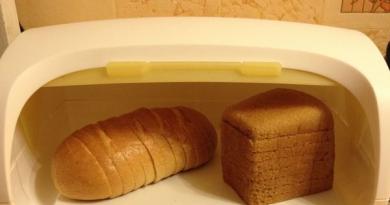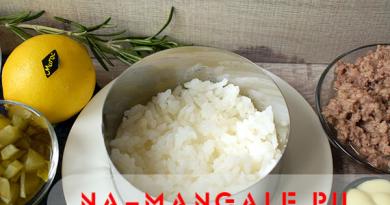Restoration of fire containers for fire butts. Obsyag of burning tanks
The volume of burning water reserve (W pr) is determined by saving the water needed for:
Pinogasinnya with a length of 15 hvilins (0.4 years) (clause 3 of appendix 3 of SNiP 2.11.03-93)
W 1 = 0.4 x 18.8 x 3.6 = 27.072 m3
Sprinkling with water (cooling) for 6 years (clause 8.16 SNiP 2.11.03-93)
W 2 = 6 x (38.13 + 21.46) x 3.6 = 1287.144 m 3
Water intake from hydrants lasts for 3 years (clause 2.24 SNiP 2.04.02-84*).
W 3 = 3 x 0.25 x (38.13 + 21.46 + 18.8) x 3.6 = 211.653 m3
W pr = W 1 + W 2 + W 3 = 27.072 + 1287.144 + 211.653 = 1525.869 ≈ 1526 m 3.
We will accept two RVS-1000 tanks with a volume of 1000 m 3 for installation. The tanks are heated using heating water. The water temperature in the tanks is maintained at plus 10 degrees C.
The standard time for the renewal of fire water in tanks is 24 years (clause 2.25 SNiP 2.04.02-84*) and operates behind the designed circular gospodarsko-drinking water supply with a flow rate of no less
1526/24 = 63.58 m 3 /year = 17.66 l/s (8.67 l/s for the skin reservoir).
The throughput capacity of the pipeline, with the reduction of water consumption in the gospodarsko-pitana consumption of enterprises up to 70% (note 2 of clause 2.25 SNiP 2.04.02-84 *), becomes:
63.58 + 0.7 x 2.285 = 65.18 m 3 /year = 18.01 l/sec
2.4 Selection of existing pumps
The pump for supplying water from tanks to the ring water supply is selected based on the following data:
Pump efficiency Q = 99.7 l/s ≈ 360 m 3 /year;
The pressure in front of the fire monitors and foam generators is nominally 60 m (more than 40-80 m);
Diameter of installation lines – 400 mm
Diameter of pressure lines – 250 mm
The extension of the pipeline from the SR to the furthest point is 0.8 km;
(along the ring, with the possible connection of one plot for repairs – 1.1 km)
H = 60 + 1.2 x L x 1000i = 60 + 1.2 x 0.8 x 19.9 = 79.1 ≈80 m;
H = 60 + 1.2 x L x 1000i = 60 + 1.2 x 1.1 x 19.9 ≈ 86 m.
Three pumping units (2 working; 1 reserve) of 1D200-90 brand (D K = 270 mm) with a 5AM250M2U3 electric motor, power rating 90 kW, are accepted for installation. The operating interval of the pump for productivity is 140 to 250 m-code 3/year. We need a maximum consumption of 360 m 3 /year to ensure two pumps in parallel operation with a pressure of 92 m of water. Art.
2.5 Selection of circulation pumps
By preventing water from freezing in the ring pipeline, circulation around the tank is ensured at a temperature not lower than plus 5 degrees.
The productivity of pumps and the quality of thermal insulation of pipelines of the above-ground ring water supply system is determined by the method of carefully avoiding the formation of mud in the pipe and by preventing the water temperature in the pipeline from falling below plus 5 degrees C according to the method. included in CH 510-78.
The temperature of the water at the head of the pressure water pipe is important, since placing a pickaxe near the pipe is not allowed. Radius of a steel pipe to a water conduit r= 0.125 m. Dovzhina of the ring water pipeline l = 1600 m. Vitrata Vodi G=10000 kg/year. Thermal insulation of pipes - scarified polyurethane polyurethane polyurethane foam from the manufacturer d i = 0.06 m; thermal conductivity coefficient of polyurethane foam l ta = 0.028 W/(m×°C). Minimum average air temperature t V = - 57 ° C. Wind speed v= 7.7 m/s. Water fluidity in a pipeline DN 250 mm at a given water flow rate v= 0.057 m/s.
When setting the temperature of water at the end of the rozhrakunka plot to the pipeline t up to = 5 degrees C and thermal insulation quality dі temperature of water on the cob of the rosemary plot t n may buti no less
t n = (t to - t V) e j z + t V ,
de t c – minimum average external temperature, °C;
e - exponent (display function)
a c - coefficient of heat transfer from water to the inner walls of the pipe, W/m 2 ×°C), which is determined by the formula
a n is the coefficient of heat transfer to the surface of the pipeline and the external wind, W/(m 2 ×°C), which is determined according to the external radius (with insulation) and the wind speed
v - Wind speed, m/s.
Behind these formulas there is a significant meaning
a = 1415 x 0.057 0.8 / (2x0.125) 0.2 = 188.74 W/(m×°C)
R in = 1/(2x2.14x188.74 x 0.125) = 0.006746 m×°C/W
an = 37 x 7.7 0.8 / 0.2 = 231.076 W/(m 2 ×°C)
R n = 1 / 2x3.14 (0.125 +0.1) x 231.076 + 1 / 2x3.14x0.028 x ln [(0.125 + 0.06) / 0.125] = 2.232 m × ° C / W
φ 3 = 1600/1.16x10000x (0.06746 + 2.232) = 0.0616
t n = (5-(-57)) e 0.07 + (-57) = 8.94 °C
Thus, the cob temperature is 10 degrees. With a sufficient level of circulation loss of 10 m 3 /year and insulation with 60 mm polyurethane foam, the temperature at the end of the ring pipeline dropped no lower than + 5 degrees C.
Acceptable before installation is the Irtish-TsML 50/130-1.5/2 pump with a productivity of 10 m 3 /year, a pressure of 21 m, a quantity of 3 units (1 robot, 2 reserve), including 7.3 CH 510-78.
3 Operational section
3.1 Description of fire extinguishing circuits
3.1. Destruction of many fire extinguishing agents in the tank.
In SSP tank farms, as a rule, fire-extinguishing fire-extinguishing air-mechanical foam is transferred at a medium rate. Powder warehouses, aerosol spray water and etc. can be transferred. The methods and methods of extinguishing are based on the results of scientific research and development in the established order.
Fire alarms on the SNN can be controlled by the following settings:
stationary automatic fire extinguishing systems, stationary non-automatic fire extinguishing systems and re-extinguishing systems. Selecting installations of fire extinguishing traces for transferring in storage in the area of the SNN, installation of individual tanks, refurbishment of the SSN, organization of fire fighting at the SSN or the possibility of preserving the necessary keel bones of fire equipment from close to 3 km of fire parts that are scattered within a radius.
The stationary installation of automatic foam fire extinguishing consists of:
From the pumping station;
Points for preparing the preparation of the product;
Reservoirs for water and water purifier;
power generators installed on tanks near the upper part;
Dosing equipment;
Pipelines for supplying the foam converter to the foam generators;
automation features.
The stationary installation of a non-automatic foam fire extinguishing system on ground-based tanks consists of the very same elements that are stationary and automatic, in addition to automation methods.
Renewal installation - used cars and motor pumps, as well as equipment for supplying fuel. The water supply is transferred from the external water supply system, adjacent tanks or natural water reservoirs.
The choice of foam fire extinguishing installation is determined based on technical and economic considerations.
The development of fire extinguishing methods is carried out at different intensities of chemical supply, and the fire is extinguished over time. The intensity of supply of fire extinguishing agents is equal to the volume per unit area (l/s ∙ m 2).
The triviality of the present, then. fire extinguishing hour – the hour at which fire extinguishing agents are supplied until liquidation is completed at a given supply intensity.
To calculate the water consumption for the preparation of a chemical solution, a multiplicity factor is used, which shows the ratio of the volume of the liquid to the volume of water that went into its preparation (multiplicity for the chemical solution) They are more expensive: = 5).
The water supply and foam lines of the fire extinguishing system are insured due to the loss of water, the fluidity of which should not exceed v = 1.5 m/s.
The maximum supply of the foam lines is between l = 40 – 80 m-code.
The amount of water that is in stock is taken at least 5 times the amount of water used to extinguish and cool the tanks.
The maximum surface area for naphtha products in RVZ is 10,000 m 3
de D - tank diameter, m
Substituting values are removed
Fp = ------ = 6.38 m2
Calculate the amount of chemical foam that is supplied to extinguish the fire in the tank using the formula:
Qn = q n sp ∙ Fp ∙ τ ∙ To z.v.
De Qn - fire volume of fire, m3;
q n ud – intensity of supply of foam, l/s ∙ m 2 (for diesel
accepted q n beat = 0.2 l/s ∙ m 2)
Fp - mirror area of the naphtha product in the tank, m 2, 60 -
translated by xv. at sec.; 0.001 - transfer obsyag z l in m 3;
To z. - Coefficient of the supply of polyurethane compounds
(Acceptable = 1.25)
τ – hour of extinction, year. (Acceptable = 25)
Substituting values are removed:
Qn = 60/1000 ∙ 0.2 ∙ 638(Fp) ∙ 25 ∙ 1.25 = 241 m 3
The required amount of water for the formation of the foam:
De K - multiplicity factor for chemical foam
(Acceptable = 5)
Qв = 241/5 = 48 m 3
A significant amount of water must be spent on cooling the surface and vessel tanks (water must be spent on cooling the walls of the vessel and vessel tanks, which are located in front of the vessel at a distance of less than 2 diameters of the tank; cooling is carried out water jets from thin sleeves).
Use water to cool the tank to burn:
Q w.r.r. = 3600/1000 ∙ Lp ∙ q sp.v.g. ∙ τ oh.g.
De 3600 – translation of the years of the sec., 1000 – translation of the l. at m 3
Lp - dovzhina stake tanks, m
(L = π ∙ D = 3.14 ∙ 28.5 = 89.5 m)
q ud.v.g – water vitrat water supply for cooling walls
fuel tank, l/m ∙ s (accepted = 0.5)
τ oh.g. - hour of cooling the tank before burning, year.
(Acceptance = 10 years)
Substituting values are removed:
Q w.r.r. = 3600/1000 ∙ Lp ∙ Np ∙ q sp.v.s. ∙ τ o.s.
De Np – number of vessel tanks on the substation
2 diameters (cutaneous patch accepts N = 3)
τ – hour of cooling of the vessel reservoir, year.
Visnovok:
The material of the pipes is chavun (2, clause 8.21), accepts a ring border, half of the repair plots with two lines of water supply should take no more than 5 km (2, clause 8.10), the depth of laying the pipes, falling to the bottom, is to blame for 0, 5 m more for freezing of the soil for the Rozrakhunka depth (2, clause 8.42). The PG should be installed on the road at a distance no more than 2.5 m from the edge of the roadway (2, clause 8.16), but not closer than 5 m from the walls, it is allowed to extend the PG on the roadway (2, clause 8. 16), when PG is installed not allowed in the galley (2, clause 8.16); with the specified dimensions of the wells, the minimum distance to the inner surfaces of the wells must comply with GOST (2, clause 8.63).
ROZRAHUNO NAPIRNIO - REGULATORY CAPACITIES
Restoration of clean water tanks
The clean water reservoir (CWT) plays the role of a regulating and reserve capacity and is distributed between NS-I and NS-II below.
Significance obsyag RHF
W RFV = W reg RFV + W n.z RFV – W shіd RFV
Significant regulating obligation
Regulatory scope of applications for regulating irregularities in water supply

Significantly unfinished obsyag
W n.z = W pozhezhi + W h.p. + W in.
1). Burning stock
Accepted t carcasses = 3 years (2, clause 2.24)

2). Gospodarsko-drinking reserve.
The insufficient reserve for the gospodarsko-pitana consumption can be supported by the amount of water that is stored, under the hour of maximum water supply during the period, which is equal to the hour of extinguishing. If t carcasses = 3 years i Up to a year. Max. =1.7, then three years of the greatest expenditure from 1100 to 1400. At this hour, go to the Gospodarsko-pitnі to consume n.p. converge 5.5 +7 +7 = 19.5% of the total water supply
3) Virobnichesky stock.
W n.z = W pozhezhi + W h.p. + W in. = 756.0 + 1186.4 + 540 = 2482.4 m 3
The importance of water renewalW meeting RHF

0.125 ∙ Q day.max = 0.125 ∙ 10404 = 1300.5 m 3
The importance of the total cost of clean water tanks
W RFV = W reg RFV + W n.z RFV - W shіd RFV = 2077.7 +2482.4-1300.5 = 3260 m 3
Significantly the quantity of the RHF and the obsessiveness of one of them
W 1 RFV ≥ W RFV ∙ 1/n,
Accepted n=3 (1, clause 9.21)
Select standard tanks
I choose 3 tanks with a volume of 1200 m 3
Brands and main parameters of tanks
Zrobiti visnovok
The number of fire reservoirs is no less than two (2, clause 9.29), in which case they must save 50% of the water required for fire extinguishing (2, clause 9.29). The tanks will be made of reinforced concrete (4, page 275). The storage tanks are equipped with a waste pipeline for supplying and collecting water, draining excess water, and discharging brine water during repairs (4, page 275).
Water towers (WB) are designed for:
regulation of uneven water supply;
Preserving an adequate supply of water;
Creation of the necessary pressure in the margin.
Capacity of the SB tank:
W tank = W reg. + W n.
Significantly regulating volume of the WB tank
The adjustable volume of the SB tank serves to control uneven water supply by reaching:
A – the difference between the maximum and minimum values of excess water in the SB. In about a year. Max. = 1.7 A = 5.0% (Table 7).
The value of the regulating volume of the water tower tank
|
Godinnik Dobi |
Feed NS-1% |
Nadhodzhenya to RHF, % |
Vitrata s RCHV, % |
Surplus at RHF, % |
Feed NS-2% |
Nadhodzhennia to Sat, % |
Vitrata z SB, % |
SB surplus, % |
Vitrata of the village, % |
Water is the most effective way to fight fires. Therefore, installation is a cost-effective approach, directing attention and localization.
See burned containers
The fire reservoir is compact, filled with water, designed in accordance with the established fire standards and is suitable for use. When designing a tank, the characteristics of the object being protected and the climatic characteristics of the locality are taken into account. Coming from this, there are three types of burning containers:
- underground;
- aboveground;
- underground drinks.
For the preparation of fire tanks, steel, steel, stone, reinforced concrete or steel sheet material can be used.
fire tank storage tanks
The skin area is equipped with the following elements:
- ventilation systems;
- pipelines for maintaining and draining the countryside;
- overflow devices;
- hatches for carrying out repair work;
- plum;
- go scoby;
- Vkazivniki of the Rivnya region.
It is important to take care of the safety and integrity of water by considering ways to protect against mechanical inflow and other external factors. For which hydro-thermal insulating materials are used. Locality, vikonana from metal, obov'yazkovo mai buti grounded.
The obligatory system is treated with fire water (regardless of whether it is natural) – ensuring a free passage for transport.
Destruction of containers burned with water
It is especially important to maintain the flow of water in the tank, since it is impossible to extinguish the half-life, vikorystaya and direct water supply.
A body of water that burns must contain the necessary volume of water to ensure:
- special fire extinguishing systems – deluge, sprinkler, etc.
- satisfaction with everyday and agricultural needs while fighting the fire;
- extinguishing the half with the help of external hydrants or internal taps.
To determine the exact amount of water required in the tank, you need to consider the following factors:
- fluidity of water supply;
- an hour in which the half-light will be extinguished;
- the average number of episodes is near the beginning of the period;
- The liquid content of the tank is filled.
When the tank is drained with water and the average water is wasted, three times the drainage time for the largest tank, as well as the cooling of other tanks, is ensured.
Coming from these data, you can calculate the quantity and volume of burning tanks on the Maidan.


